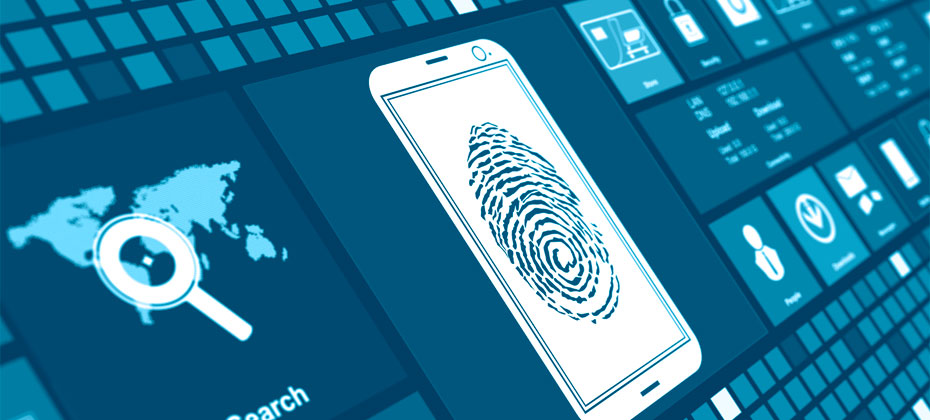Tag: identity

Previously, the Global Identity and Fraud Report called for businesses to meet consumer expectations for online recognition and security while improving the digital experience. Organizations have answered this call with investments and new initiatives, but the fraud risk persists and consumers are relying on businesses to protect them. In our latest report, we explore the issues associated with siloed recognition processes, consumer expectations and preferences, and effective risk strategies. We surveyed more than 6,000 consumers and 1,800 businesses worldwide about this connection for our 2022 Global Identity and Fraud Report. This year’s report dives into: How online security yields engagement and trust with today’s digital consumers The role of businesses in protecting online consumers, and the associated benefits The current opportunity for businesses to implement multiple identity and fraud solutions The role that orchestration and outsourcing play in helping companies prevent fraud To earn consumer trust and loyalty, organizations need to leverage automated solutions to identify and protect consumers across their online journeys while providing seamless recognition and low-friction fraud prevention with a robust and flexible fraud platform. To learn more about our findings and how to implement an effective solution, download Experian’s 2022 Global Identity and Fraud Report. Read the report Review your fraud strategy

Cryptocurrency scams are on the rise as digital currencies gain popularity. The decentralized nature of these currencies makes them equally attractive to both legitimate consumers and fraudsters. Businesses may find themselves in a difficult position as they seek to prevent cryptocurrency-related fraud and help protect consumers. What are cryptocurrency scams? Cryptocurrencies are virtual currencies often based on and secured by blockchain technology. However, this does not always translate into security for the individual consumer. Many individuals fall victim to either cryptocurrency investment scams or cryptocurrency theft. Cryptocurrencies are not yet well-regulated or backed by a sovereign entity, leaving consumers open to threats when purchasing funds. The deregulated nature of the currencies makes it easy for scammers to build what appear to be legitimate cryptocurrency projects before disappearing, similar to pump-and-dump stock schemes. Additionally, scammers will perpetrate romance or other relationship-based scams and convince the victim to send them funds in cryptocurrency form. Cryptocurrency theft follows a few traditional fraud patterns: The fraudster may use phishing or social engineering to steal credentials. A crime ring might leverage malware or keystroke loggers to do the same thing. A scammer might present a “reward” to an unsuspecting consumer and require access to their wallet in order to “gift” the reward. Scammers consistently find new ways to trick unsuspecting consumers, including a recent scam relying on QR codes to steal funds converted to cryptocurrency via an ATM. Other common scams utilize imposter websites, fake mobile apps, bad tweets, or scamming emails to steal information and funds. The impact of scams on consumers According to the FTC, investment cryptocurrency scam reports have skyrocketed, with nearly 7,000 people reporting losses totaling more than $80 million from October 2020 to March 2021, with a media loss of $1,900. In 2020 the Better Business Bureau Scam Tracker Risk Report ranked cryptocurrency scams as the seventh riskiest. In 2021, they jumped to the second riskiest scam. In Michigan alone 31 cryptocurrency scams were reported from January 2020 to March 2022, with reported loses from $350 all the way to $41,000. The impact of scams on businesses While the true impact of cryptocurrency scams on businesses is hard to measure, it’s easy to identify several areas for concern. First is the opportunity for the theft of personally identifiable information (PII) during a fraudulent cryptocurrency transaction. Once fraudsters have stolen funds, they may also funnel them through a legitimate business and turn them into a regulated form of currency for easy of use. Businesses with legitimate cryptocurrency interactions may also suffer from spoofed apps or websites, causing reputational damage when consumers are taken in by a scam. Preventing the fallout from scams As companies debate accepting cryptocurrency as a form of payment, it’s important to consider that funds may be stolen or accessed by a malicious party. One way to protect your organization is to have a strong device identification strategy that can help ensure the entity accessing an account and the funds within is the true owner. By layering in this protection with other fraud defenses, businesses can be better prepared as consumer payment preferences shift. Additionally, financial institutions and other organizations should keep consumers informed about how to protect their own data and signs of scams. To learn more about how Experian is helping businesses develop and maintain effective fraud and identity solutions, visit us or request a call. And keep an eye out for additional in-depth explorations of our Future of Fraud Forecast. Request a call Future of Fraud Forecast

Experian recently announced Experian Identity and published an advertorial in American Banker outlining the integrated approach to identity that recognizes the full breadth of the company’s authoritative data solutions that help businesses better connect with their consumers in more personalized, meaningful and secure ways. The efforts address the rapidly changing definition and landscape of identity and take on the importance and needs for identity which span across the entire customer journey. From marketing to a specific consumer’s needs, to facilitating a friction-right customer experience, to protecting personal information. As such, there’s a gap for single-partner providers to help businesses navigate this change, while also putting the needs of the consumer first. “Identity data sets are constantly growing with inputs from new interactions. Many future sources of data have yet to be even conceived or developed,” said Kathleen Peters, Chief Innovation Officer, Experian Decision Analytics. “Staying ahead of the identity market curve is vital, and it requires building and continually evolving an enterprise-scale identity solution that interconnects with your own unique data and systems to create attribute-rich profiles of your customers that work across any identity application. That’s Experian Identity.” Experian Identity underscores the need businesses have to respond to increasing identity needs with interconnected, scalable technology, products and services that optimize the consumer experience. While the integrated approach announcement is new, the capability is not. Experian has been trusted for decades to secure individuals’ identity around the most important decisions in their lives – think purchasing a car or home, being identified at the doctor’s office, and more. As such, consumers remain at the center of every action. Experian Identity offers identity resolution, verification, authentication and protection, and fraud management solutions that include first- and third-party fraud, account takeover, credit card verification, identity resolution and restoration, risk-based authentication, synthetic identity protection and more. Additionally, we’ve included a special blog post introducing Experian’s identity capabilities from Kathleen Peters on the Experian Global News Blog and additional coverage. Stay tuned for more updates. Experian Global News Blog - Making Identities Personal: Experian Helps Businesses Build Consumer Trust American Banker – Making Identities Personal: Building Trust and Differentiating Your Brand Experian White Paper - Making Identities Personal For more information about Experian Identity, visit www.experian.com/identity-solutions.

Rewards are among the most appealing features of any credit card. While upfront benefits, like sign-up bonuses and cashback, are most influential in card acquisition, ancillary benefits, like fraud and identity protection, can amplify a card’s overall value.1 Credit card fraud ranked as the second most common form of identity theft in 2021,2 and is expected to become even more frequent as consumers continue to bank and shop online.3 42% of consumers are concerned for the safety of their banking and shopping transactions. With digital identity theft and fraud on the rise, it’s no surprise that safety measures are “very” or “extremely” important to consumers when deciding between different credit cards.4 In response, many card issuers have started to market their security and protection-related benefits more frequently to better capitalize on their cards’ value to consumers. The ways they’ve highlighted these benefits include: A fraud protection campaign From spotlighting their fraud protection benefits in card welcome kits to providing privacy tips on social media, credit card issuers have crafted compelling campaigns to demonstrate their commitment to protecting their customers from fraud and identity theft. In turn, issuers can differentiate their cards from the competition and improve response rates. Reminders about their fraud prevention efforts Issuers have also sent out ongoing reminders outlining the protections their credit cards offer, such as credit monitoring services 5 that notify cardholders of suspicious activity on their credit report. By consistently promoting their efforts to keep their customers’ accounts and data safe, issuers can earn their cardholders’ trust, build loyalty and drive card usage. While benefits like cashback and travel points can help with card acquisition, fraud and identity protection benefits can help drive long-term customer relationships, especially now that card fraud is becoming a growing concern.6 To learn more about how businesses have worked to meet the consumer demand for secure interactions, check out our 2021 Global Identity and Fraud Report. Learn more 1Jonathan O'Connor. "Most Consumers Aren't Aware of Their Credit Cards' Ancillary Benefits. How Does This Impact Card Acquisition and Usage?" TSYS, January 2019 2FTC. "Consumer Sentinel Network" Data Book, 2021 3April Berthene. "Coronavirus pandemic adds $219 billion to US ecommerce sales in 2020-2021" Digital Commerce 360, March 2022 4"Consumers Consider as Many as Six Factors When Choosing Credit Card" PYMTS.com, December 2021 5David McMillin. "Identity theft is a major problem, but these 5 credit card protection programs can help keep you safe" Business Insider, June 2021 6"New FICO Survey Finds Overconfidence Could Put US Consumers at Risk From Scams" Business Wire, February 2022

It’s time for organizations to harness the power artificial intelligence (AI) can bring to digital identity management – quickly and accurately identifying consumers throughout the lifecycle. The rise in crime The acceleration to digital platforms created a perfect storm of new opportunities for fraudsters. Synthetic identity fraud, stimulus-related fraud, and other types of cybercrime have seen huge upticks within the past year and a half. In fact, the Federal Trade Commission revealed that consumers reported over 360,000 complaints, resulting in more than $580 million in COVID-19-related fraud losses as of October 2021. To protect both themselves and consumers, businesses — especially lenders — will have to find and incorporate new strategies to identify customers, deter fraudsters and mitigate cybercrime. The benefits of AI for digital identity In our latest e-book, we explore the impacts of AI on organizations’ digital identity strategies, including: How changing consumer expectations increased the need for speed The challenges associated with both AI and digital identities The path forward for digital identity and AI How to develop the right strategy Building a solution It’s clear that current digital identity and fraud prevention tools are not enough to stop cybercriminals. To stay ahead of fraudsters and keep consumers happy, businesses need to look to new technologies — ones that can intake and compute large data sets in near-real time for better and faster decisions throughout the customer lifecycle. By using AI, businesses will enjoy a fast and consistent decisioning system that automatically routes questionable identities to additional authentication steps, allowing employees to focus on the riskiest cases and maximizing efficiency. Read our latest e-book to dive into the ways artificial intelligence and digital identity interact, and the benefits a clear identity strategy can have for the entire user journey. Download the e-book

Over the last year and a half, strong trends emerged in how businesses and consumers interact online - specifically when validating identities and preventing fraud. We initially explored these trends at a global level, and now we've explored U.S.-specific insights into online security, the customer experience, and digital activities and operations. Download the North America findings report to learn more about business and consumer fraud and identity trends impacting the way we live, work, and interact. Review your fraud strategy

The surge in digital demand over the past year reinforced the deep connection between recognition, fraud prevention and the online customer experience. As businesses transformed their operations to accommodate the rapidly growing volume of digital transactions, consumer expectations for easy, secure interactions increased at an even faster pace. That meant less tolerance for the interruptions caused by security and risk controls. We surveyed more than 9,000 consumers and 2,700 businesses worldwide about this connection for our 2021 Global Identity and Fraud Report. This year’s report dives into: Business priorities for the year ahead Why the digital customer experience remains siloed Consumer preferences that impact the digital customer journey Pandemic-era digital activities that have changed consumer expectations As we move forward into the rest of 2021 it’s crucial that businesses continue to focus on fraud prevention. In order to implement an effective fraud strategy that also makes it easier for customers to engage, businesses need to move away from a one-size-fits-all approach and focus on applying the right level of protection to each and every transaction. Download the report Review your fraud strategy

Since 2002, lenders have been aware of the importance of Know Your Customer (KYC) and the associated Customer Identification Program (CIP) requirements. As COVID-19 has changed procedures and priorities for businesses and consumers across the board, it’s more important than ever for institutions to ensure their CIP process includes ongoing monitoring of identity risk. What is CIP? Standard KYC programs include a Customer Identification Program to verify and validate identities along with due diligence to assess the risks associated with each identity. CIP defines the process by which a business collects data to establish a reasonable belief that the identity is valid, and that the individual is eligible to participate in our financial system. While this process works in conjunction with other fraud mitigation tactics, they serve different purposes. A good CIP program emphasizes the customer experience, regulatory compliance, cost control, and smart growth. Fraud mitigation focuses on ensuring that an eligible identity is being presented by its true owner, rather than as part of a scheme to acquire goods and services with intent to default on repayment obligations. Businesses who focus on solely on fraud mitigation rather than complying with KYC and CIP regulations run the risk of potential harm to business reputation, and of course, financial penalties. Fenergo found that as of the end of 2019, global penalties for AML and KYC non-compliance totaled $36 billion. CIP vs. Fraud Mitigation Many financial institutions equate a CIP program with efforts to mitigate fraud. It’s understandable, as both processes include emphasis on the accuracy of an identity as it’s presented by a consumer. It is assumed that only the true owner of the identity would possess the detailed information necessary to meet CIP requirements and therefore would not likely be committing fraud. There was a time—prior to large scale thefts of stored information, personal details shared through social media and other behavior changes that made personal information very public—when this would have been true. Unfortunately, those days have passed and even an amateur criminal with limited experience and resources could find current, accurate identity information for sale online, information good enough to pass the CIP test and be considered a legitimate consumer. The real challenge is that when they go through CIP, many real consumers may inadvertently provide true information that doesn’t meet the verification standard. This is a result of consumer lifestyle changes outpacing the sources of data used to verify the information they’ve provided. It makes sense; in most years roughly 13% of American adults change their address. New homes, job changes and changes in marital status impact a large number of people every day. Adding to the confusion—it’s life’s changes that prompt people to borrow and purchase. The result is that many of the people that are more likely to fail CIP verification are the very people trying to legitimately access financial services. The result is that CIP verification often isn’t a challenge for those intending to commit fraud, but it can be for genuine consumers. The challenges of CIP In a recent internal study, Experian reviewed the ability to pass a standard CIP strategy that assessed the accuracy of the name, current address, date of birth and Social Security number provided by a large sample of consumers. We then compared legitimate consumers to those later confirmed to have been identity thieves impersonating a victim. Consistently, the identity thieves were at least as proficient at passing CIP as their true-consumer counterparts. In a second step, we applied a fraud score that looked for identity theft by assessing the past uses of the identities, their consistency, velocity and many other characteristics unrelated to the accuracy of the data. The difference between CIP verification and a fraud risk assessment was striking. Across the entire range of fraud risk, the percentage of records that passed CIP verification remained the same. That said, CIP still plays a very important role in risk mitigation. In fact, CIP and fraud prevention are inextricable in financial services. Just as a CIP verified identity can still be fraud, a record that may appear to be low fraud risk may not pass CIP. Since both processes have existed side by side for nearly two decades, each presumes that the other is in place and both are necessary to detect and prevent fraud. Striking a balance CIP verification and fraud mitigation strategies are both necessary and important to protecting assets and the broader financial system from fraud. It’s important to leverage a layered approach where both eligibility and risk are assessed, and next steps for verification include resolution of identity discrepancies alongside verification that ensures an identity is not being misused for fraud. Experian can help you confidently verify customer identities, understand and anticipate customer activities, and implement ongoing monitoring. If you’d like to set up a review of your current strategy or learn more about how we can help you with CIP and fraud mitigation to strengthen your ability to know your customer compliantly, let us know. Contact us

The COVID-19 pandemic created a global shift in the volume of online activity and experiences over the past several months. Not only are consumers increasing their usage of mobile and digital channels to bank, shop, work and socialize — and anticipating more of the same in the coming months — they’re closely watching how businesses respond to their needs. Between late June and early July of this year, Experian surveyed 3,000 consumers and 900 businesses to explore the shifts in consumer behavior and business strategy pre- and post-COVID-19. More than half of businesses surveyed believe their operational processes have mostly or completely recovered since COVID-19 began. However, many consumers fear that a second wave of COVID-19 will further deplete their already strained finances. They are looking to businesses for reassurance as they shift their behaviors by: Reducing discretionary spending Building up emergency savings Tapping into financial reserves Increasing online spending Moving forward, businesses are focusing on short-term investments in security, managing credit risk with artificial intelligence, and increasing online customer engagement. Download the full report to get all of the insights into global business and consumer needs and priorities and keep visiting the Insights blog in the coming weeks for a deeper dive into US-specific findings. Download the report

The COVID-19 pandemic and resulting rush to transition to a remote lifestyle made it clear that many businesses need a refreshed digital authentication and fraud prevention strategy that includes an investment in technology and provides consumer assurance. This is particularly important when it comes to identity, as many of the standard in-person verification methods and tools are currently unavailable. The meaning of identity is growing and shifting Technology trends are intersecting with social trends to create heightened awareness, and a whole new public conversation has emerged around customer trust and privacy. Attitudes and ideas are changing—even to the point of what we mean by “identity.” An identity is no longer just a name, date of birth, and SSN. Now, there are digital manifestations everywhere you look: screen names, email addresses, mobile phone numbers, device identifiers, and the other “exhaust” we leave behind as we travel the internet. This leads to concerns about what an identity is, who owns it, and who manages and protects it. Businesses have to be able to prove to their ability to protect their customers’ identities through investment in technology and a robust fraud strategy. Consumer attitudes are changing Several years ago, consumers were excited by all the new digital capabilities and the speed, ease, and convenience they provided. Last year, Experian found that consumers still wanted those things, with 70% willing to provide more information to businesses if there was a perceived benefit. However, they also wanted more security in the balance. In Experian’s most recent Global Identity and Fraud Report, we found that 74% of consumers say that security is the most important factor when deciding to engage with a business. Consumers are particularly more tolerant of friction during the enrollment process—as a means of building trust. But, when they return to the app or website, they want to be recognized. This means achieving a balance by using layered technologies, some of which are active and visible to the consumer, and some of which are invisibly working in the background to confirm the identity of returning consumers. Consumer attitudes vs. regulatory pressure The drivers behind the business changes are twofold: shifting consumer attitudes and regulatory changes. While regulations are becoming stricter on a national and global level, they’re not keeping pace with technology and social change. The digital world is evolving at a rapid pace, opening up more new ways for companies to collect information about consumers and use it to identify and verify, and also to target goods and services. With all of this data available, it’s important for businesses to use the tools in the market to help protect identity information. Next steps in technology The bottom line is, businesses can’t wait for regulations to dictate how best to protect information. Instead, they should be looking to technologies like physical and behavioral biometrics to help provide identity authentication and protection – layering those solutions with information from the user and from third parties to give a holistic consumer view. Businesses should adopt a platform approach for identity and fraud in order to be able to adapt quickly, whether to incorporate new kinds of technology or to prevent emerging types of fraud. By investing in technology now, even in the midst of the COVID-19 pandemic, businesses can build the flexibility needed to respond to future crises and help offset future fraud losses. In turn, those fraud-loss savings can then be used to help grow the business in the future. Learn more about Experian’s commitment to helping businesses maximize their investment in technology to safeguard against fraud. Learn more

If you’ve been on the dating scene in the last few years, you’re probably familiar with ghosting. For those of you who aren’t, I’ll save you the trip to Urban Dictionary. “Ghosting” is when the person you’re dating disappears. No calls. No texts. No DMs. They just vanish, never to be heard from again. As troublesome as this can be, there’s a much more nefarious type of ghosting to be wary of – credit ghosting. Wait, what’s credit ghosting? Credit ghosting refers to the theft of a deceased person’s identity. According to the IRS, 2.5 million deceased identities are stolen each year. The theft often occurs shortly after someone dies, before the death is widely reported to the necessary agencies and businesses. This is because it can take months after a person dies before the Social Security Administration (SSA) and IRS receive, share, or register death records. Additionally, credit ghosting thefts can go unnoticed for months or even years if the family of the deceased does not check their credit report for activity after death. Opportunistic fraudsters check obituaries and other publicly available death records for information on the deceased. Obituaries often include a person’s birthday, address or hometown, parents’ names, occupation, and other information regularly used in identity verification. With this information fraudsters can use the deceased person’s identity and take advantage of their credit rating rather than taking the time to build it up as they would have to with other types of fraud. Criminals will apply for credit cards, loans, lines of credit, or even sign up for a cell phone plan and rack up charges before disappearing. Where did this type of identity theft come from? Credit ghosting is the result of a few issues. One traces back to a discrepancy noted by the Social Security’s inspector general. In an audit, they found that 6.5 million Social Security numbers for people born before June 16, 1901, did not have a date of death on record in the administration’s Numident (numerical identification) system – an electronic database containing Social Security number records assigned to each citizen since 1936. Without a date of death properly noted in the database, government agencies and other entities inquiring won’t necessarily know an individual is deceased, making it possible for criminals to implement credit ghosting schemes. Additionally, unreported deaths leave further holes in the system, leading to opportunity for fraudsters. When financial institutions run checks on the identity information supplied by a fraudster, it can seem legitimate. If the deceased’s credit is in good standing, the fraudster now appears to be a good customer—much like a synthetic identity—but now with the added twist that all of the information is from the same person instead of stitched together from multiple sources. It can take months before the financial institution discovers that the account has been compromised, giving fraudsters ample time to bust out and make off with the funds they’ve stolen. How can you defend against credit ghosting? Luckily, unlike your dating pipeline, there are ways to guard against ghosting in your business’ pipeline. Frontline Defense: Start by educating your customers. It’s never pleasant to consider your own passing or that of a loved one, but it’s imperative to have a plan in place for both the short and long term. Remind your customers that they should contact lenders and other financial institutions in the event of a death and continue monitoring those accounts into the future. Relatives of the deceased don’t tend to check credit reports after an estate has been settled. If the proper steps aren’t taken by the family to notify the appropriate creditors of the death, the deceased flag may not be added to their credit report before the estate is closed, leaving the deceased’s information vulnerable to fraud. By offering your customers assistance and steps to take, you can help ensure that they’re not dealing with the fallout of credit ghosting—like dealing with calls from creditors following up after the fraudster’s bust-out—on top of grieving. Backend Defense: Ensure you have the correct tools in place to spot credit ghosts when they try to enter your pipeline. Experian’s Fraud Shield includes high risk indicators and provides a deceased indicator flag so you can easily weed them out. Additionally, you can track other risk indicators like previous uses of a particular Social Security number and identify potential credit-boosting schemes. Speak to an Experian associate today about how you can increase your defenses against credit ghosting. Let's talk

Although half of businesses globally report an increase in fraud management over the past 12 months, many still experience fraud losses and attacks. To help address these challenges, Experian held its first-ever Fintech Fraud & Identity Meetup on February 5 in San Francisco, Calif. The half-day event was aimed at offering insights on the main business drivers of fraud, market trends, challenges and technology advancements that impact identity management and fraud risk strategy operations. “We understand the digital landscape is changing – inevitably, with technology enhancements come increased fraud risk for businesses operating in the online space,” said Jon Bailey, Experian’s Vice President of Fintech. “Our focus today is on fraud and identity, and providing our fintech customers with the tools and insights needed to grow and thrive.” The meetup was attended by number of large fintech companies with services spanning across a broad spectrum of fintech offerings. To kick off the event, Tony Hadley, Experian’s Senior Vice President of Government & Regulatory Affairs, provided an update on the latest regulatory news and trends impacting data and the fintech space. Next followed a fraud and identity expert panel, which engaged seasoned professionals in an in-depth discussion around two main themes 1) fraud trends and risk mitigation; and 2) customer experience, convenience, and trust. Expert panelists included: David Britton, Experian’s Vice President of Industry Solutions; Travis Jarae, One World Identity’s Founder & CEO; George Kurtyka, Joust’s Co-Founder & COO; and Filip Verley, Airbnb’s Product Manager. “The pace of fraud is so fast, by the time companies implement solutions, the shelf-life may already be old,” Britton said. “That is the crux – how to stay ahead. The goal is to future-proof your fraud strategy and capabilities.” At the close of the expert panel, Kathleen Peters, Experian’s Senior Vice President Head of Fraud and Identity, demoed Experian’s CrossCore™ solution – the first smart, open, plug-and-play platform for fraud and identity services. Peters began by stating, “Fraud is constant. Over 60% of businesses report an increase in fraud-related losses over the past year, with the US leading the greatest level of concern. The best way to mitigate risk is to create a layered approach; that’s why Experian invented CrossCore.” With the sophistication of fraudsters, it’s no surprise that many businesses are not confident with the effectiveness of their fraud strategy. Learn more about how you can stay one step ahead of fraudsters and position yourself for success in the ever-changing fraud landscape; download Experian’s 2019 Global Identity and Fraud Report here. For an inside look at Experian’s Fintech Fraud & Identity Meetup, watch our video below.

As our society becomes ever more dependent on everything mobile, criminals are continually searching for and exploiting weaknesses in the digital ecosystem, causing significant harm to consumers, businesses and the economy. In fact, according to our 2018 Global Fraud & Identity Report, 72 percent of business executives are more concerned than ever about the impact of fraud. Yet, despite the awareness and concern, 54 percent of businesses are only “somewhat confident” in their ability to detect fraud. That needs to change, and it needs to change right away. Our industry has thrived by providing products and services that root out bad transactions and detect fraud with minimal consumer friction. We continue to innovate new ways to authenticate consumers, apply new cloud technologies, machine learning, self-service portals and biometrics. Yet, the fraud issue still exists. It hasn’t gone away. How do we provide effective means to prevent fraud without inconveniencing everyone in the process? That’s the conundrum. Unfortunately, a silver bullet doesn’t exist. As much as we would like to build a system that can detect all fraud, eliminate all consumer friction, we can’t. We’re not there yet. As long as money has changed hands, as long as there are opportunities to steal, criminals will find the weak points – the soft spots. That said, we are making significant progress. Advances in technology and innovation help us bring new solutions to market more quickly, with more predictive power than ever, and the ability to help clients to turn these services on in days and weeks. So, what is Experian doing? We’ve been in the business of fraud detection and identity verification for more than 30 years. We’ve seen fraud patterns evolve over time, and our product portfolio evolves in lock-step to counter the newest fraud vectors. Synthetic identity fraud, loan stacking, counterfeit, identity theft; the specific fraud attacks may change but our solution stack counters each of those threats. We are on a continuous innovation path, and we need to be. Our consumer and small business databases are unmatched in the industry for quality and coverage, and that is an invaluable asset in the fight against fraud. It used to be that knowing something about a person was the same as authenticating that same person. That’s just not the case today. But, just because I may not be the only person who knows where I live, doesn’t mean that identity information is obsolete. It is incredibly valuable, just in different ways today. And that’s where our scientists come into their own, providing complex predictive solutions that utilize a plethora of data and insight to create the ultimate in predictive performance. We go beyond traditional fraud detection methods, such as knowledge-based authentication, to offer a custom mix of passive and active authentication solutions that improve security and the customer experience. You want the latest deep learning techniques? We have them. You want custom models scored in milliseconds alongside your existing data requests. We can do that. You want a mix of cloud deployment, dedicated hosted services and on-premise? We can do that too. We have more than 20 partners across the globe, creating the most comprehensive identity management network anywhere. We also have teams of experts across the world with the know how to combine Experian and partner expertise to craft a bespoke solution that is unrivaled in detection performance. The results speak for themselves: Experian analyzes more than a billion credit applications per year for fraud and identity, and we’ve helped our clients save more than $2 billion in annual fraud losses globally. CrossCore™, our fraud prevention and identity management platform, leverages the full breadth of Experian data as well as the data assets of our partners. We execute machine learning models on every decision to help improve the accuracy and speed with which decisions are made. We’ve seen CrossCore machine learning result in a more than 40 percent improvement in fraud detection compared to rules-based systems. Our certified partner community for CrossCore includes only the most reputable leaders in the fraud industry. We also understand the need to expand our data to cover those who may not be credit active. We have the largest and most unique sets of alternative credit data among the credit bureaus, that includes our Clarity Services and RentBureau divisions. This rich data helps our clients verify an individual’s identity, even if they have a thin credit file. The data also helps us determine a credit applicant’s ability to pay, so that consumers are empowered to pursue the opportunities that are right for them. And in the background, our models are constantly checking for signs of fraud, so that consumers and clients feel protected. Fraud prevention and identity management are built upon a foundation of trust, innovation and keeping the consumer at the heart of every decision. This is where I’m proud to say that Experian stands apart. We realize that criminals will continue to look for new ways to commit fraud, and we are continually striving to stay one step ahead of them. Through our unparalleled scale of data, partnerships and commitment to innovation, we will help businesses become more confident in their ability to recognize good people and transactions, provide great experiences, and protect against fraud.

Identity-related fraud exposure and losses are increasing, and the underlying schemes are becoming more complex. To make better decisions on the need for step-up authentication in this dynamic environment, you should take a layered approach to the services you need. Some of these services include: Identity verification and reverification checks for ongoing reaffirmation of your customer identity data quality and accuracy. Targeted identity risk scores and underlying attributes designed to isolate identity theft, first-party fraud and synthetic identity. Layered, passive or more active authentication, such as document verification, biometrics, knowledge-based authentication and alternate data sources. Bad guys are more motivated, and they’re getting better at identity theft and synthetic identity attacks. Fraud prevention needs to advance as well. Future-proof your investments. More fraud prevention strategies to consider>

Identify your customers to spot fraud. It’s a simple concept, but it’s not so simple to do. In our 2018 Global Fraud and Identity Report, we found that consumers expect to be recognized and welcomed wherever and whenever they do business. Here are some other interesting findings regarding recognition and fraud: 66% of consumers surveyed appreciate seeing visible security when doing business online because it makes them feel protected. 75% of businesses want security measures that have little impact on consumers. More than half of businesses still rely on passwords as their top form of authentication. Even though you can’t see your customers face-to-face, the importance of being recognized can’t be overemphasized. How well are you recognizing your customers? Can you recognize your customers?